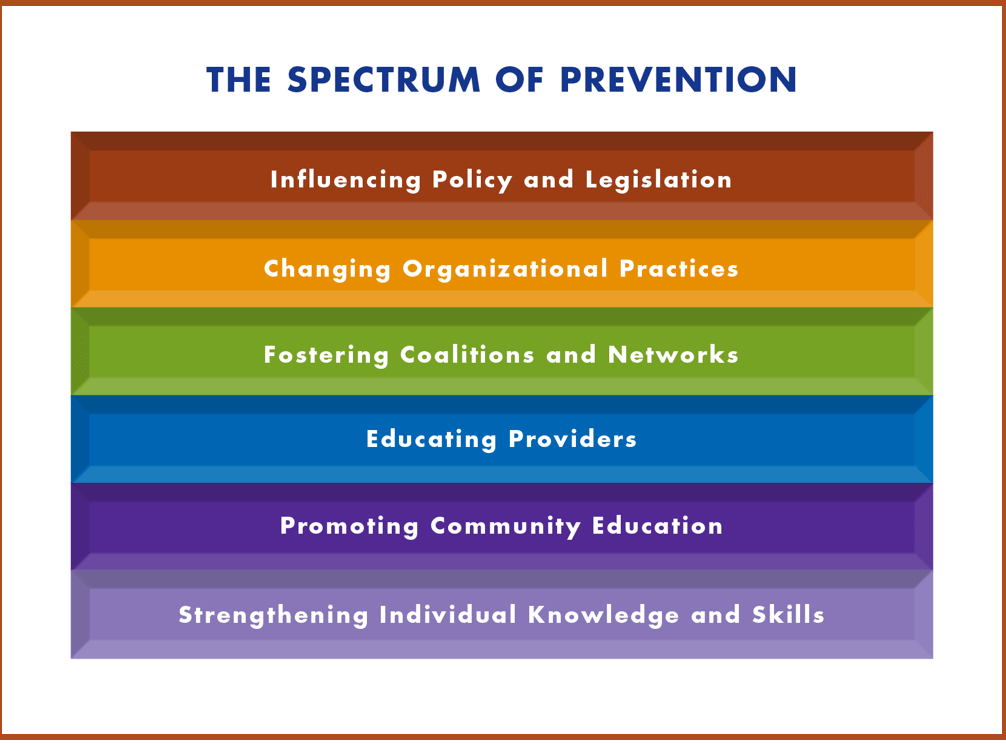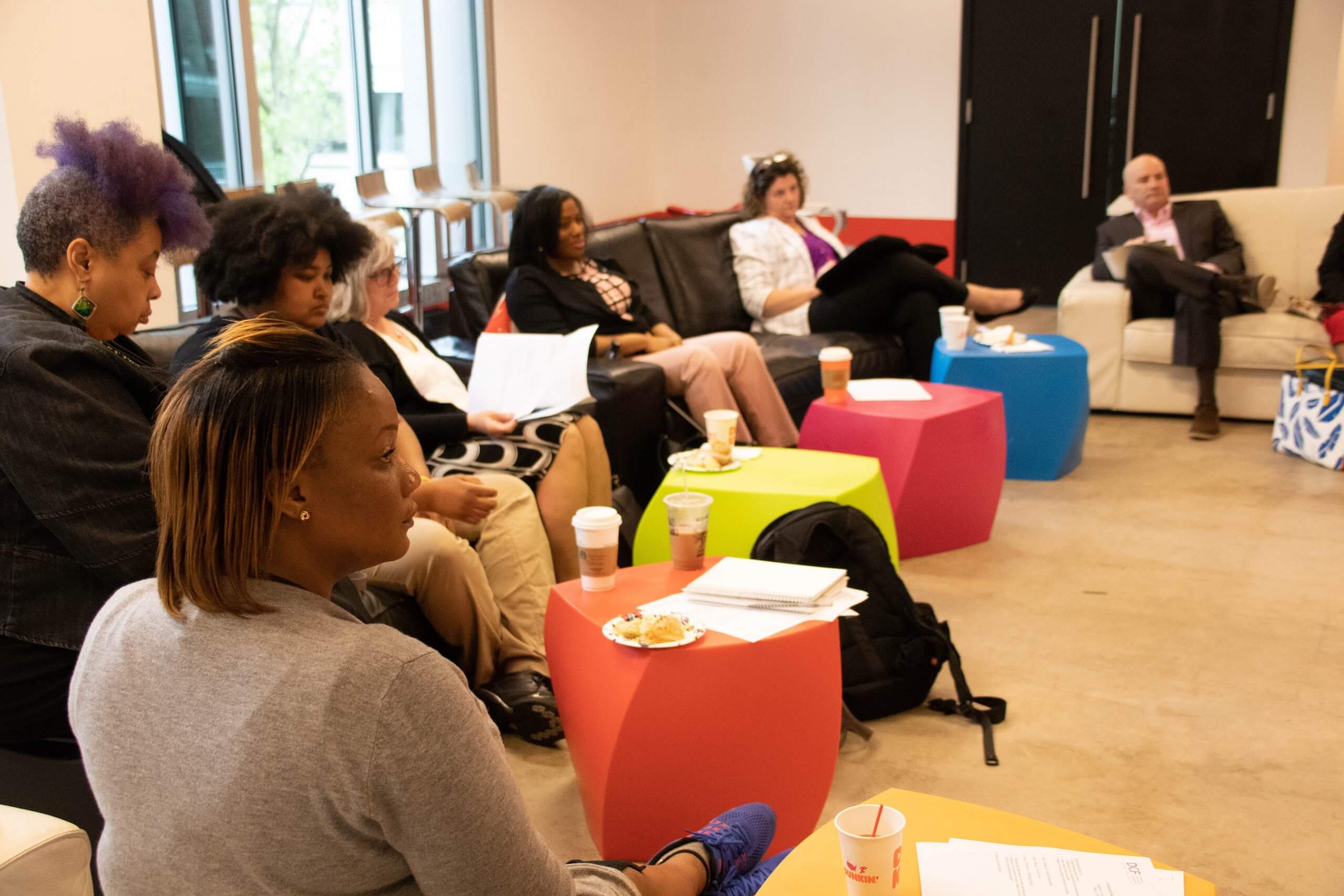Introduction
The Community Equity Project cohort participated in a series of the team building activities and discussions, and reviewed materials throughout the fellowship. These activities allowed the fellows to identify and share their starting point as well as their understanding of and perspective on equity. The cohort exercises underscored the differences in individual perspectives. It also pointed to the need to further explore what is meant by equity and the need for an equity perspective or lens to reduce disparities. Several fellows worked together on a discovery team to examine the concept of equity and the need to develop an equity lens and create a clear vision for equity in Wilmington.
Defining Equity
Early in the fellowship, the cohort agreed that equality and equity are different. The fellows embraced the picture below as the best representation of the cohort’s idea of equity. It underscores that not everyone is, or should be, the same. Our needs differ and, as such, so should our resources.

Although our nation has a notable history of attempting to address inequities, entrenched disparities across all measures clearly indicate that our national and local attempts to address disparities have failed to move the needle toward equity. Our lack of progress may be, in part, due to insufficient scope and breadth of these efforts but is also the result of strategy. Most of our social policies and programs have been founded on an idea of fairness that is grounded in equality rather than equity. An equality lens or perspective assumes that one size fits all and that to be fair everyone is offered the same opportunities and resources. An equality lens ignores the differences and, in turn, fuels inequities and perpetuate disparities. The fellows concluded that to move the needle toward equity, we must adopt an equity lens, understand the differences, and develop responses with those differences at the forefront.
The fellows also emphasized that disparities are the result of mutually reinforcing efforts across multiple vectors as portrayed in the diagram below. Understanding how these vectors operate in tandem is fundamental to crafting equitable change. The fellows concluded that an equity lens must be used to view and assess the multiple vectors simultaneously. Their findings and recommendations specific to these vectors are discussed in the other briefs.


The fellows also found the Prevention Institute’s Spectrum of Intervention helpful in framing equity work at multiple levels. The Prevention Network’s diagram (to the right) summarizes the components of the intervention system and the primary role of each component. The Spectrum identifies six levels of intervention and emphasizes the scope and breadth of effort necessary to create change. All six levels are complementary and synergistic. When used together, they have a greater effect than would be possible from a single activity or initiative.
Although the fellows quickly found common ground on the concept of equity and adopting an equity lens, there was not consensus on the equity being synonymous with race equity. Many of the fellows focused on race equity while several of the fellows think of equity as broader than race equity. Throughout the materials recapping the work of the Community Equity Program fellowship, the broader term, equity, is used. For many, race equity can be substituted for equity without altering the primary findings of the fellows. There are key places in throughout the Community Equity Fellowship materials that race equity is specified to emphasize the significance of race in understanding equity in the US.
All the fellows, however, recognized the role of racism in the development of policies and practices. Through the work of the fellowship, the cohort shared a common understanding of role of racism in the current disparities. They embraced that our nation was built on a false narrative of race differences that has created structural racism. As defined by the University of Delaware’s Partnership for Healthy Communities, structural racism is the totality of ways in which societies foster racial discrimination through mutually reinforcing systems of housing, education, employment, earnings, benefits, credit, media, healthcare and criminal justice[1]. It creates a system in which public policies, institutional practices, and other norms work in various, often reinforcing ways to perpetuate racial group inequity. It identifies dimensions of our history and culture that have allowed privileges associated with ‘whiteness’ and disadvantages associated with ‘color’ to endure and adapt over time.”
Structural racism is an interlocking web of forces that perpetuate race inequities across all social indicators. The diagram below shows the impact of structural racism on the social determinants of health that define health outcomes.

This same relationship is evident with other indicators of well-being, such as wealth. Prosperity Now’s Racial Wealth Divide in Wilmington clearly reveals the racial disparity that defines economic and financial status. This is the landscape that the fellows considered as they envisioned an equitable Wilmington.
Equity in Wilmington
The cohort produced a clear vision of equity for Wilmington.
A just and fair society where all can participate and prosper.
An equitable Wilmington will unlock the potential of our community,
and unleash the potential in all of us.
The fellows further described equity as:
People will be empowered, educated and thrive; feel inspired, fulfilled and safe; experience sustainable health and well-being; and have access to opportunity, resources and support to reach their full potential,
Community will share privilege to support the greater good; learn how to celebrate and value all individuals; and make decisions together.
Organizations will enlist the community to drive decision making; attend to the perspectives of those most affected by any decision; remove barriers to people’s well-being; engage everyone in the transparent, inclusive decision making, accountable through data; and meet communities where they are
Laws will allow everyone access to the services they need; foster a culture of inclusion; and protect and promote vulnerable populations.
The Community Equity Project cohort’s vision and the commitment to advance equity are influencing the work of the DCF. Explore DCF commitments and work at delcf.org/community.
